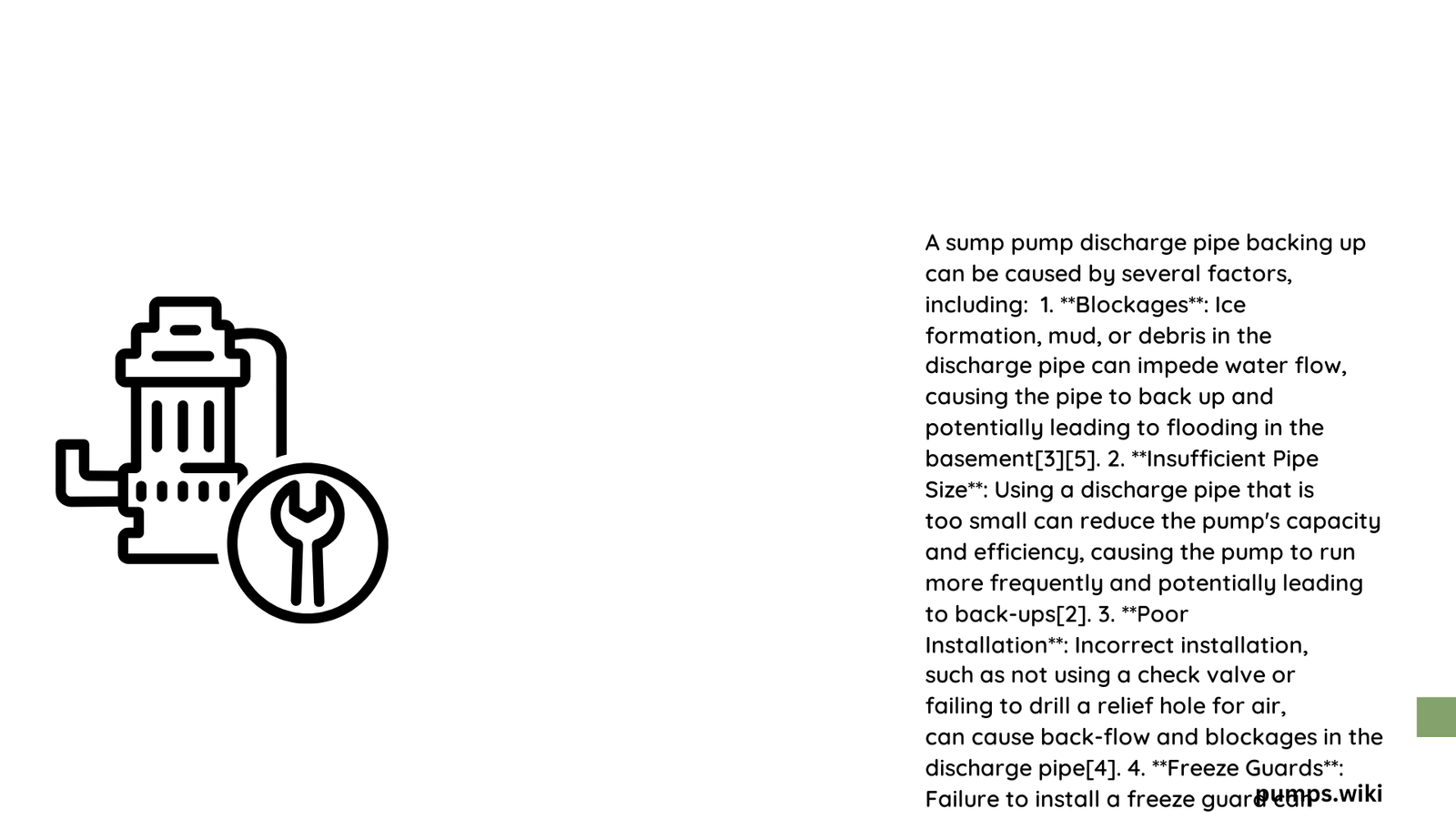Sump pump discharge pipe backing up can transform a dry basement into a potential water disaster zone. Homeowners often face critical challenges when water fails to exit properly, leading to potential flooding, structural damage, and costly repairs. Understanding the intricate dynamics of discharge line blockages, flow restrictions, and preventive maintenance becomes paramount in safeguarding your property’s foundation and interior spaces.
What Causes Sump Pump Discharge Pipe Blockages?
Why Do Debris Accumulate in Discharge Lines?
Debris represents a primary culprit in sump pump discharge pipe backing up. Various materials can obstruct water flow:
- Organic Matter: Leaves, twigs, and soil
- Sediment Buildup: Fine particles from groundwater
- Mineral Deposits: Hard water residue
- Small Animal Nests: Potential blockage sources
| Debris Type | Potential Blockage Risk | Recommended Prevention |
|---|---|---|
| Leaves/Twigs | High | Install screened vent cap |
| Soil Sediment | Medium | Regular pipe flushing |
| Mineral Deposits | Low | Water softener installation |
How Can Pipe Slope Impact Water Flow?
Incorrect pipe slope dramatically influences discharge efficiency. Proper installation requires:
- Minimum 1% downward gradient
- Continuous downward angle
- Gravity-assisted water movement
- Avoiding horizontal pipe sections
What Role Does Pipe Diameter Play?
Pipe diameter critically determines water evacuation capacity:
- Minimum Recommended: 1.5-inch diameter
- Optimal Size: 2-inch diameter
- Flow Rate Impact: Larger diameter reduces pressure
- Blockage Prevention: Wider pipes minimize clogging risks
Practical Solutions for Discharge Pipe Backup

How to Diagnose Discharge Line Problems?
Systematic diagnostic approach includes:
- Visual pipe inspection
- Power off sump pump
- Check external discharge point
- Use plumber’s snake for blockage removal
- Flush with hot water
Can Freezing Temperatures Cause Backup?
Cold climate challenges require specialized strategies:
- Install heat tape on discharge lines
- Use pipe insulation
- Implement IceGuard mechanisms
- Create alternative water exit points
- Monitor line temperature during winter
What Maintenance Prevents Backup?
Proactive maintenance checklist:
- Biannual pipe inspection
- Clean discharge line annually
- Check pipe slope
- Verify pipe integrity
- Test water flow capacity
Advanced Troubleshooting Techniques
When Should Professional Help Be Considered?
Professional intervention becomes necessary when:
- Multiple DIY attempts fail
- Significant water damage occurs
- Complex pipe network exists
- Structural issues are suspected
How to Select Appropriate Discharge Pipe Materials?
Material selection impacts long-term performance:
- PVC: Corrosion-resistant
- ABS: Flexible installation
- HDPE: Durability in extreme conditions
Preventive Strategies
What Are Best Practices for Discharge Line Management?
Comprehensive prevention involves:
- Regular professional inspections
- Implement protective screens
- Maintain proper slope
- Use high-quality pipe materials
- Monitor water flow consistently
Technical Considerations
How Do Pressure Dynamics Affect Discharge?
Understanding hydraulic principles helps:
- Calculate maximum flow rates
- Design gravity-assisted systems
- Minimize pump strain
- Optimize pipe configuration
Conclusion
Addressing sump pump discharge pipe backing up requires a multifaceted approach combining technical knowledge, preventive maintenance, and strategic interventions.
